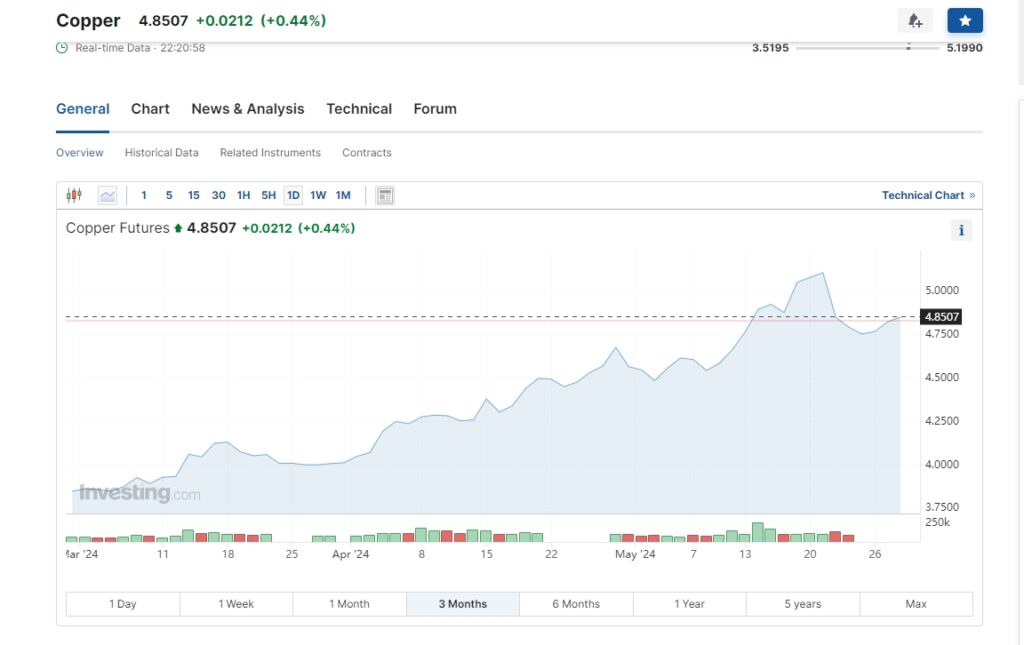Recently, global copper prices have been continuously rising, significantly affecting various industry sectors, notably the rain shower market. This article will explore the reasons behind the copper price surge, its specific impact on the rain shower market, industry countermeasures, and future opportunities and challenges.

Reasons for Rising Copper Prices
- Increasing Demand: The global economic recovery has driven a surge in demand for copper across sectors such as construction, electronics, and automotive industries. Many countries are heavily investing in infrastructure and emerging technology projects, significantly boosting copper demand.
- Supply Chain Strains: Mining and transportation bottlenecks have led to increased supply chain pressures. For example, many mines have reduced output due to pandemic control measures, and delayed transportation has further exacerbated supply shortages, pushing prices higher.
- Green Energy Transition: The development of electric vehicles and renewable energy requires substantial copper usage, further increasing market demand.

Impact of Rising Copper Prices on the Rain Shower Market
- Increased Production Costs Copper is an essential component of rain showers, including internal piping and connectors. As copper prices rise, manufacturers’ production costs increase accordingly. Manufacturers are forced to reevaluate their cost structures and seek ways to mitigate cost pressures.
- Higher Retail Prices Due to increased production costs, manufacturers often adjust market prices, passing the cost pressure onto end consumers. Price hikes may affect market demand, particularly for price-sensitive consumers who might opt for alternative products or delay purchasing decisions.
- Intensified Market Competition Rising copper prices have especially profound effects on small and medium-sized enterprises, which may lack the resources to cope with cost pressures. Some may even be forced out of the market. Larger companies might maintain competitiveness by improving production efficiency and increasing market share, potentially leading to greater market concentration and fiercer competition.
Industry Countermeasures
- Optimize Supply Chain Management Establish closer relationships with suppliers to ensure a stable supply of copper materials. Signing long-term price contracts can effectively reduce the risk of price fluctuations. Additionally, developing diversified supply channels can reduce reliance on a single supplier, thereby mitigating risks.
- Explore Alternative Materials Actively engaging in research and development to find high-performance alternative materials is a crucial way to cope with rising copper prices. For example, stainless steel and high-quality plastics can be used as substitutes to reduce material costs while maintaining product performance and quality.
- Improve Production Efficiency Adopting advanced production technology and automated equipment can enhance production efficiency and reduce per-unit production costs. This not only alleviates cost pressures from rising raw materials but also boosts the company’s market competitiveness.
- Enhance Product Value Innovative design and functional development can increase the added value of rain showers. For instance, incorporating multi-function spray modes, smart control systems, or eco-friendly water-saving designs can attract consumers who are willing to choose high-value products even amid price increases.
Future Prospects and Opportunities

Despite the challenges, the rain shower market still holds opportunities. Trends such as eco-friendly materials, smart homes, and water-saving designs provide new competitive edges for companies. Manufacturers should promptly grasp these trends and launch products that meet future demands through technological innovation and market insights, thereby maintaining a competitive edge in the fierce market.
Conclusion
The surge in copper prices has presented significant challenges to the rain shower market. However, by optimizing supply chain management, developing alternative materials, improving production efficiency, and enhancing product value, the industry can navigate these difficulties and seize new opportunities. Manufacturers need to remain agile in their responses, capitalize on emerging market opportunities, and achieve sustainable development.